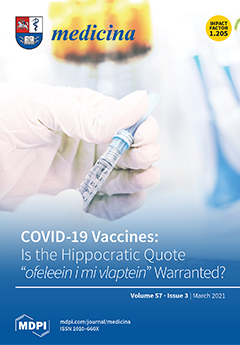Background and objectives: The aim of our study was to analyze the concentrations of inflammatory markers in the nasal tissue of patients with chronic rhinosinusitis with nasal polyps (CRSwNPs) and controls of different age groups, as well as to find associations between age, inflammation development, and NPs.
Materials and methods: Patients were divided into two groups—patients with CRSwNPs and control subjects who had nasal surgery for another reason beside CRS. Our analysis was performed across three different age groups (18–30 years, 31–50 years, and 51 years and more). Tissue biopsies from the sinus cavity for all study participants were taken and frozen at −80 °C, until use. The concentrations of IL-1β, IL-2, IL-4, IL-5, IL-6, IL-7, IL-10, IL-13, IL-21, and IL-22, were quantified using a magnetic bead-based multiplex assay.
Results: In the group aged 18–30 years, the levels of inflammatory markers IL-1, IL-2, IL-5, and IL-22 were significantly higher in patients with CRSwNPs than the control subjects. Among patients aged 31–50 years, significantly higher concentrations of IL-2, IL-4, IL-5, and IL-22 were recorded in patients with CRSwNPs, as compared to the control subjects. In the oldest group (aged 51 years and more), patients with CRSwNPs had significantly higher concentrations of IL-2, IL-4, and IL-22, as compared to the control group. In the CRSwNP group, only the concentration of IL-21 was significantly higher among patients aged 31–50 years, as compared with those aged 51 years and older (
p = 0.013).
Conclusions: IL-2 and IL-22 levels were significantly higher in patients with CRSwNP than the control, across all age groups. Only the concentration of IL-21 was higher among patients with CRSwNP in the middle age group, as compared to the oldest group. IL-2, IL-4, and IL-22 levels correlated with the severity of CRSwNPs. Elevated concentrations of IL-2, IL-4, and IL-22 were determined in patients’ groups with higher sinonasal outcome test (SNOT-22) scores, pointing to more severe clinical symptoms.
Full article






